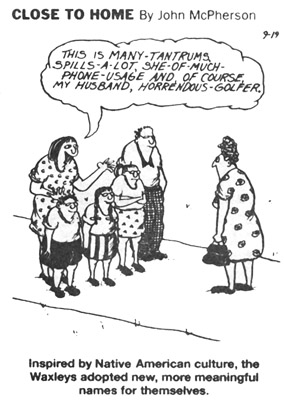"I'm going to draw little daisies on the dress and call her 'Likes to Shop a lot Girl'," she said to me.
"How about you teach your students about genocide and forced assimilation, instead of shopping" I replied.
"Relax, it's just a doll."
As a child, I thought for sure I had come from a long line of blood thirsty, vengeful people who didn't know enough to recognize the U.S. government had only their best interests in mind and as a result the government had no choice but to use force, deadly force. Today I know that these feelings, this subconscious learning, are wrong, but I also know that millions of other students and adults, native and non-native alike, don't know that, and may never know that.


I'm not sure how you distinguish between the stereotypical symbols and images and the people and institutions that purvey them. They're all part of the same problem, as far as I'm concerned. A mascot doesn't exist as an abstract symbol in isolation, for instance. It's embedded in the subculture of a school and reflects that subculture's thinking toward Indians.
ReplyDeleteIn my Stereotype of the Month contest, I report on stereotypes no matter who or where they come from. The originator can be the media, a corporation, a politician or pundit, or an educator. It can even be an Indian. The source makes no difference to me and I cover every source equally.
By the way, I reviewed Into the West when it came out in 2005. It avoided the most blatant stereotypes of the kind you listed, but it had many subtler problems. In terms of stereotyping, I'd say it was worse than average. Productions such as Dreamkeeper and the Hillerman movies did a much better job of avoiding stereotypes.
See my comments on Into the West at the end of the page in question.
ReplyDeleteI'd definitely respond if a Native found cultural mistakes of that type ("sand paintings must be indoors") in my work. My problem is getting people to give me that kind of criticism, not ignoring it.